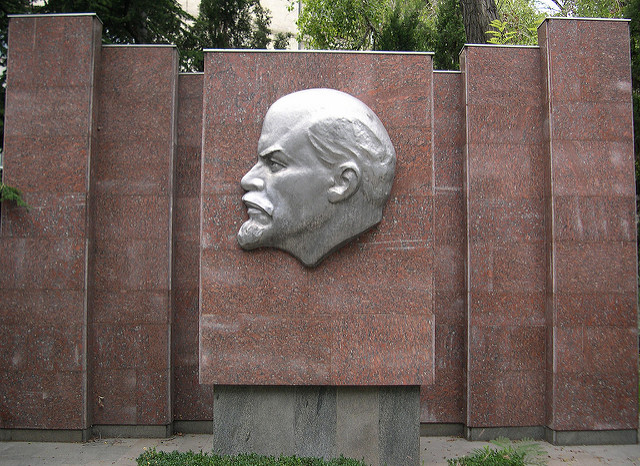In his magisterial War Without Mercy, John Dower convincingly describes how prewar anti-Japanese feelings were driven by populist American fears of Japanese immigration and actual military contingency planning, though military planners consistently underestimated the Japanese in racist terms.
Such perceptions were not simply something that had “happened” by 1941 as a result of Pearl Harbor, though. The output of the propaganda mills, whether by Hollywood or the Department of War, only succeeded in its outcome because it fell on fertile anti-Asian, white supremacist ground.
Dower’s strongest points in the book occur when he analyzes how propagandas overlapped in the Pacific War. Japanese invocation of Western degeneracy to bolster public appeal for its war aims would not appear alien to those right-wingers in the United States who had been worrying that limp-wristed, mixed-race America would lose to the “homogenous” Japanese people.
That tone – pundits portraying the enemy as more “manly” than their own leaders who are said to be “weak” – has long been present as a critique of less military-minded US foreign policies, both before and after WWII.
Dower shows that Japanese racism towards other societies was substantively different than the American kind, in large part because of the huge role the United States’ domestic ethnic tensions played in its culture and history, whereas anti-Ainu and anti-Korean sentiment (then and now, the only notable minority communities in the Home Islands) played a much smaller role in Japanese culture and history.
But there were, indeed, some continuities between Japanese-held notions of racial supremacy over other Asiatic peoples and racial pseudo-science developed in the West in the late 19th century, which found receptive audiences on the subject of eugenics and the “white” origins of the Japanese. Though these responses were primarily the product of Japanese culture, with its own domestic context and old foreign entanglements on the Asian mainland, such ideas did find fertile soil in early modern Japan, and contributed to the ultranationalist sentiment that saw Japan shackle the countries within the “Greater East Asia Co-Prosperity Sphere” with colonial policies as bad or worse than what Europeans and Americans had introduced.

The racist imagery that found the most frequent visceral expression, it would seem by Dower’s rundown of the material, was simian (employed by both sides, though much more so by the Americans). The wartime magazines Leatherneck and Yank did not have time for Upper West Side or Foggy Bottom anthropological debates. Something more concrete was needed.
Racist imagery, unsurprisingly, was deployed to explain how Singapore, Rangoon, and Bataan all fell in weeks: the Japanese were like apes leaping from tree to tree! Prejudiced as it was, the sentiment was founded in the fact that the speed and strategic surprise of the Japanese advance overwhelmed the undermanned static defenses of the allies.
The great fortress of Singapore was, literally, leapfrogged by the Japanese invasion force taking a back door route. “Monkeys” were to be tagged and bagged – though Dower shows that after the war, the slavering beast could be portrayed as a circus pet.
This is significant in viewing America’s relations with the rest of East Asia because of how often draconic imagery is employed to depict these countries. For Asians, such creatures’ depictions are more open ended, whereas in Western cultures the dragon is usually the villain – albeit a powerful one. It is a mark of grudging respect, but also fear of being overwhelmed, to be shown as a dragon in Western iconography.
It was after the war, though, that the open-endedness of both sides’ propaganda that made reconciliation palatable. How else can we explain the dichotomy between depicting the Japanese as “supermen” and as slinking cowards? The portrayal of the Japanese soldier as vermin served as a bridge between these two contradictory depictions.
Though such a discussion was better left to Dower’s second book on Japan-US relations, Embracing Defeat, it is useful to bear the Pacific War stereotypes in mind going into the occupation of Japan and the present day. It was realpolitik that drove America’s “reverse course” in Japan, the result of the Korean War and Communists’ victory in mainland China.

When the Pacific War broke out, the “treachery” of Chinese comic villain was more or less given over 100% to Tokyo, with the long-nailed and squint-eyed Mandarin monster-of-the-week going on hiatus. After WWII, the caricature shifted over to the Koreans, Vietnamese, and Chinese. American media and pundits turned to depicting the Japanese as their pupils instead of villains – the SCAF workers were there to bring the Japanese up to the Western standard.
For the Japanese, the shock of defeat, fear of communism, and the opportunity to finally be regarded among the great powers helped make the surrender and reconstruction palatable. In this, according to Dower, the depiction of the Allies as powerful demons helped smooth the transition, since “oni” and “akuma” were, like monkeys, capable of holding multiple meanings, both of fear and the grudging acknowledgment of power.
A “monkey,” after all, can be imagined as a powerful gorilla and an ill-tempered baboon – or a tame, fluffy chimp. Japan’s rulers had, as Dower shows as well, decided in the 1860s that the country’s future lay in rejecting the rest of East Asia in favor of Westernization, so there was already long history of this at play in the 1950s. US commentators had, in the decade between Japan’s triumph over the far larger Chinese and Russian empires, favorably compared Meiji statesmen to the men who “won the West” and expected that Japan would set the Asian masses in order.
One of the more interesting dimensions of this was with respect to the “vermin” imagery in vogue during the war. While much of it had been rooted in prewar assumptions about “dirty” immigrants, Japan’s own wartime actions fed into such perceptions. Japan was the only major combatant to use biological and chemical weapons in the war, after Germany’s use of them in carrying out the Final Solution.
Ironically, though, the US refused to bring war crimes charges against most of the scientists who were involved with the program during the war. Some went on to have quite lucrative pharmaceutical or medical careers after the war. They were spared prosecution in exchange for sharing what they knew, even though Allied POWs and civilian internees were among those subjected to human experimentation.
If there is one subject the book could have done more in addressing, it is why both sides were so deaf to the other’s policy rationales despite having some shared interests before the war. Western underestimation of the Japanese is described in terms of wartime issues, but also heavily lies in the prewar era. And this could have been expanded with more discussion of the two countries’ views towards the Chinese Civil War, the European empires, and other Asiatic populations living under colonial rule.
One hopes another work by Dower covering the postwar period after 1952 when the US Occupation formally ended, will come out, and strengthen this book’s comparative perspective, noting how such attitudes have shaped the current international order along the Pacific Rim, and where Japan would stand in the defense of the region from the “hordes” on the mainland –Vietnamese, Korean, Chinese and, yes, Russian, too.
Photographs courtesy of RV1864, Thomas Fisher, and Itay Halevy. Published under a Creative Commons license.





